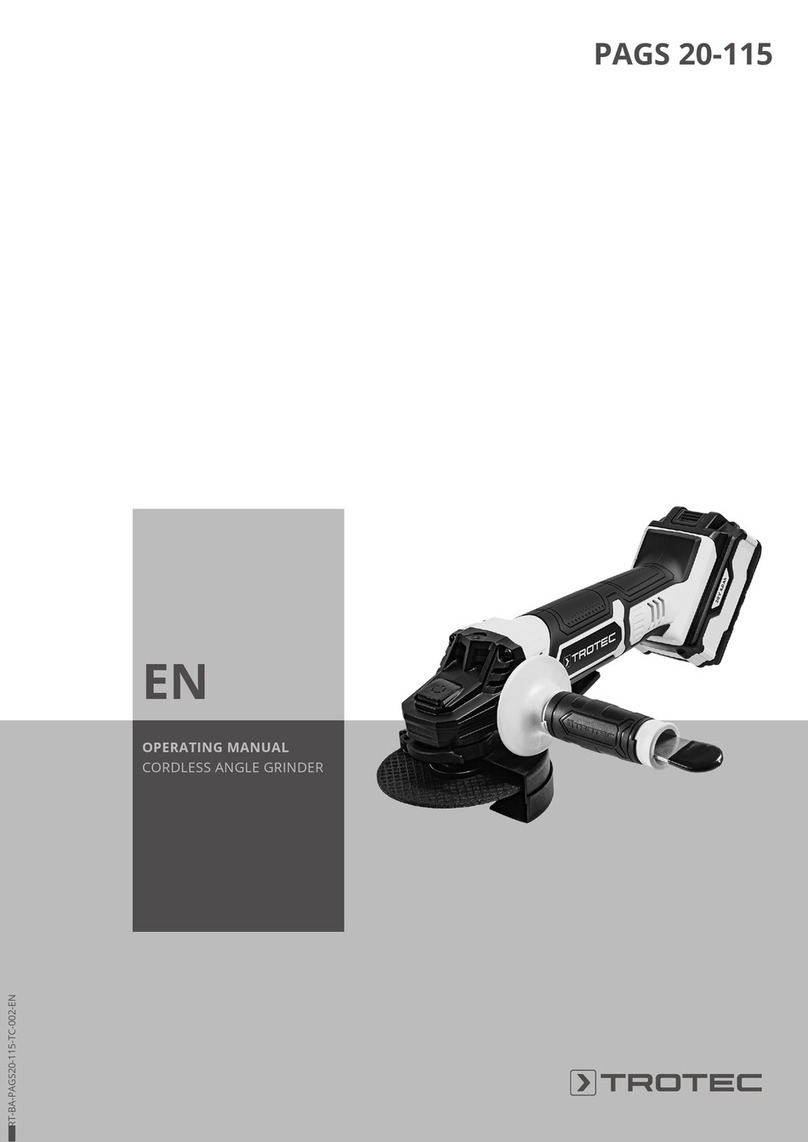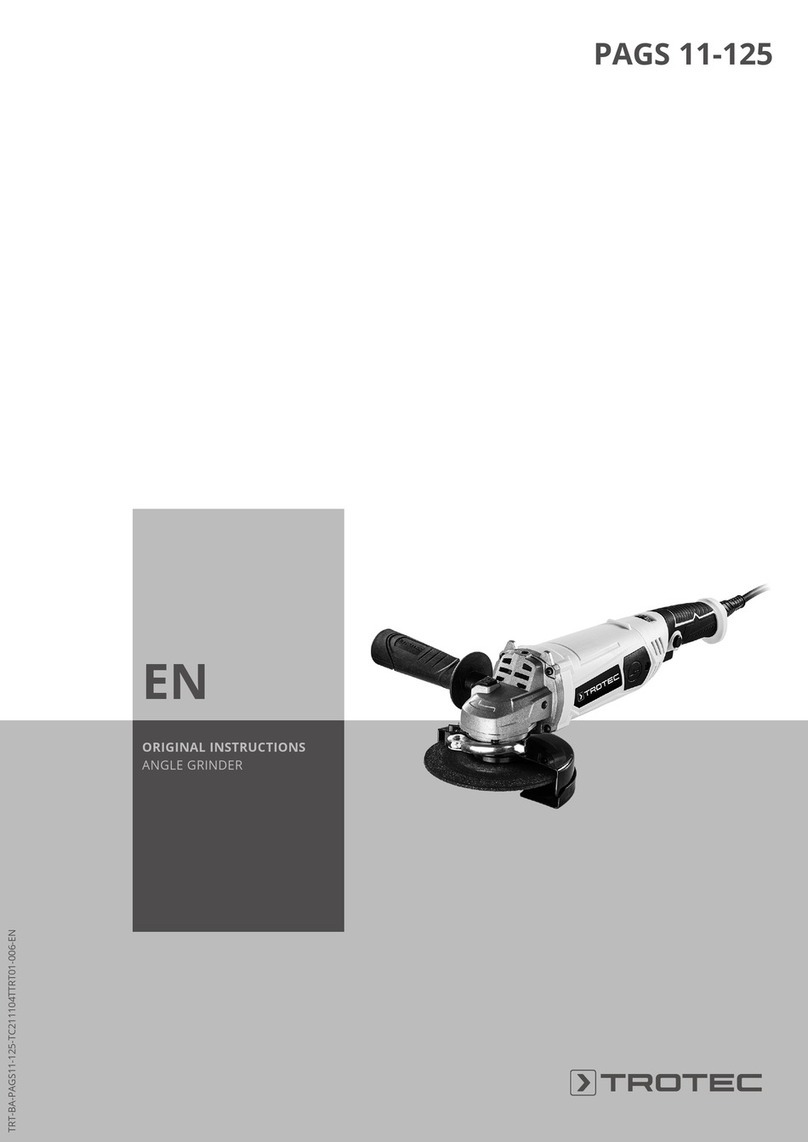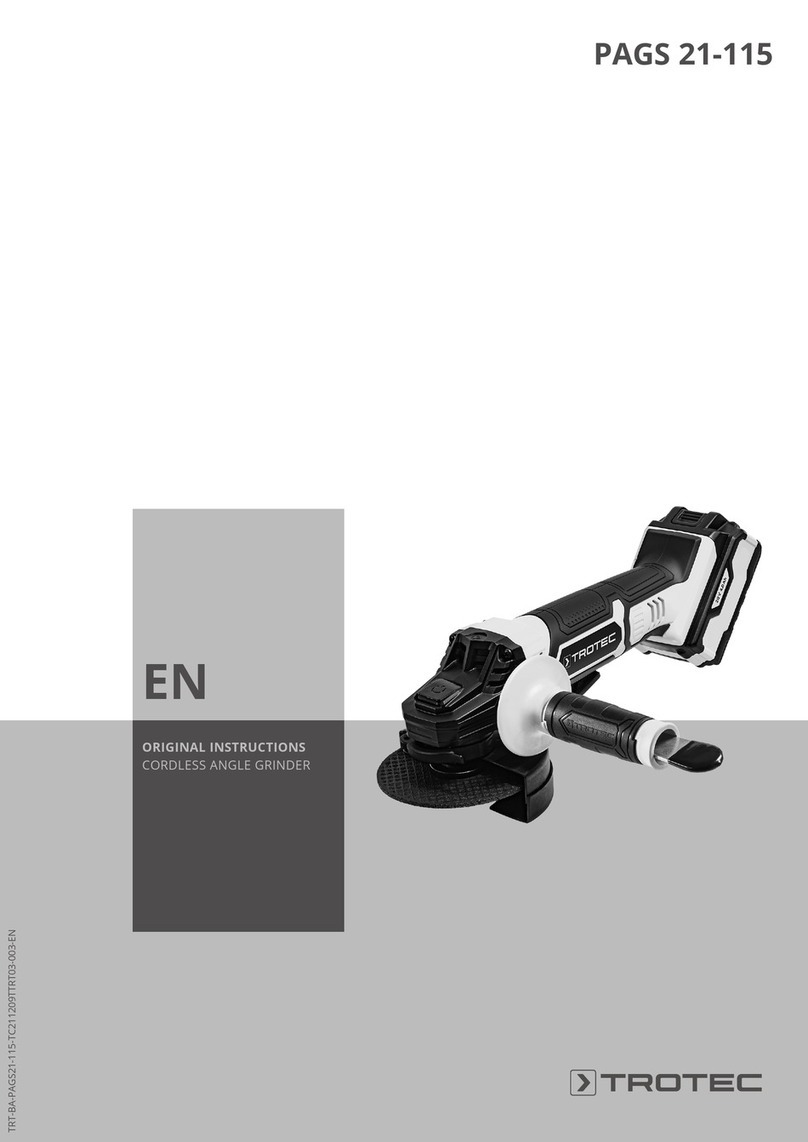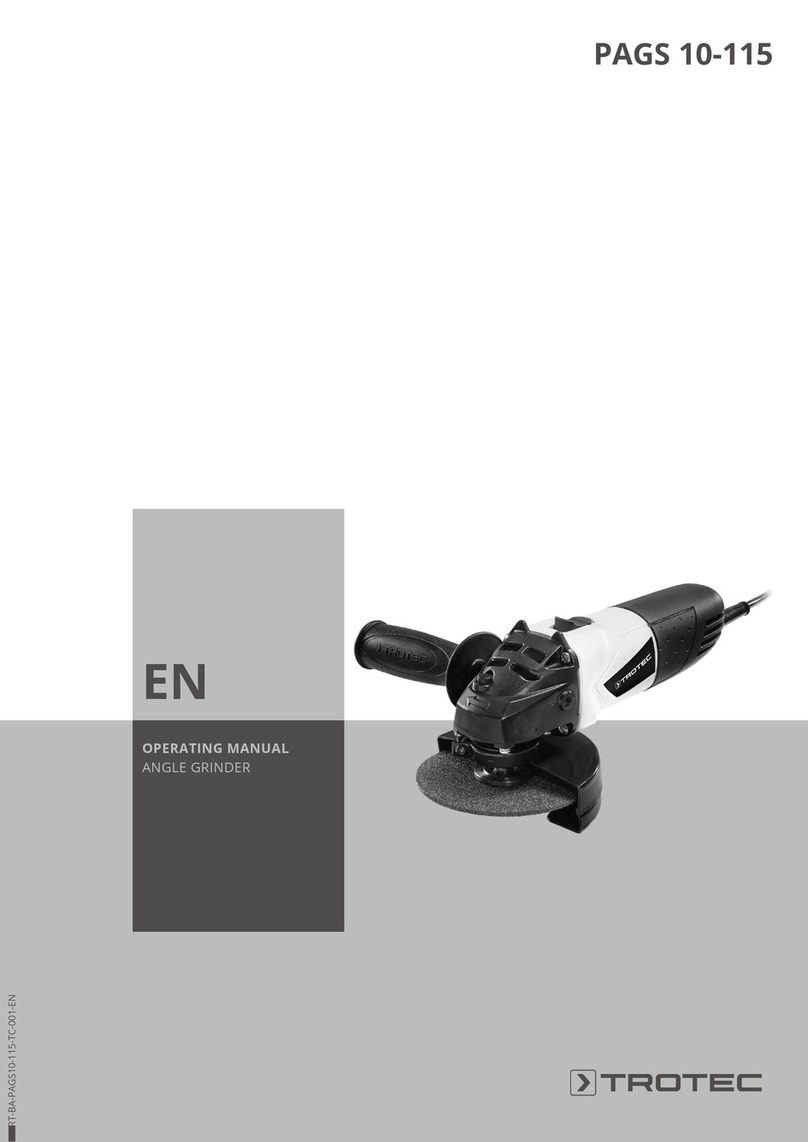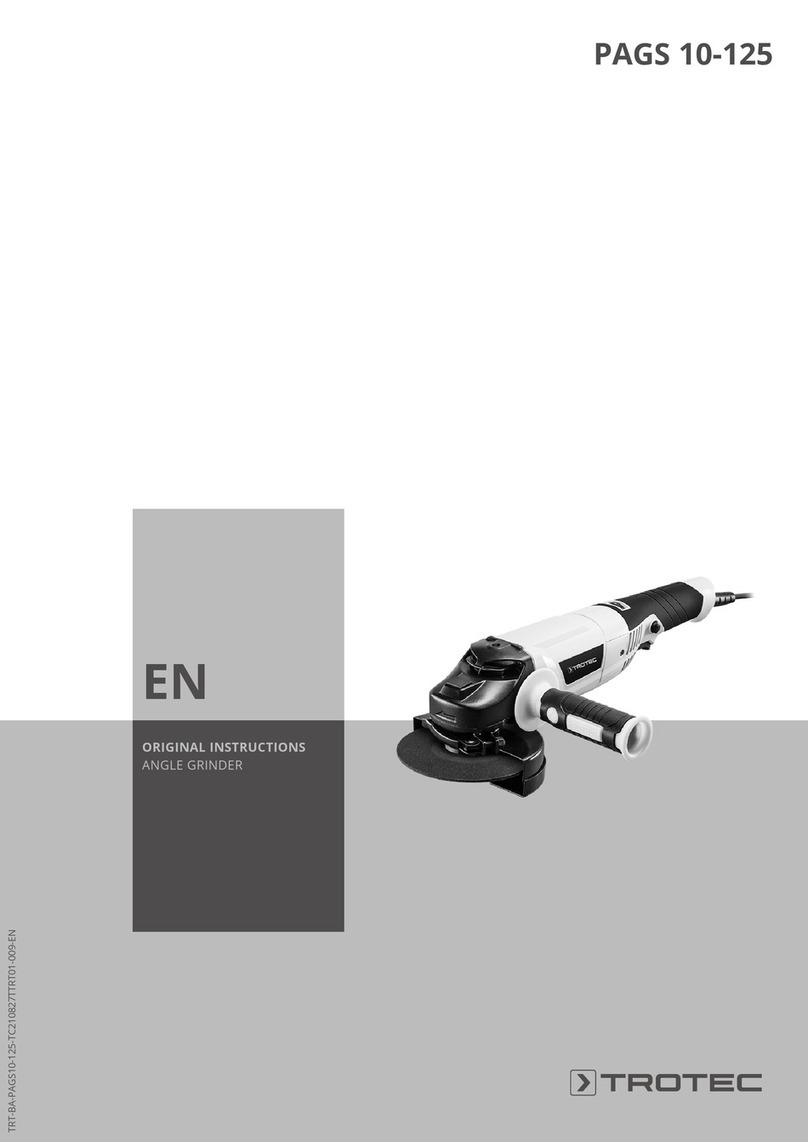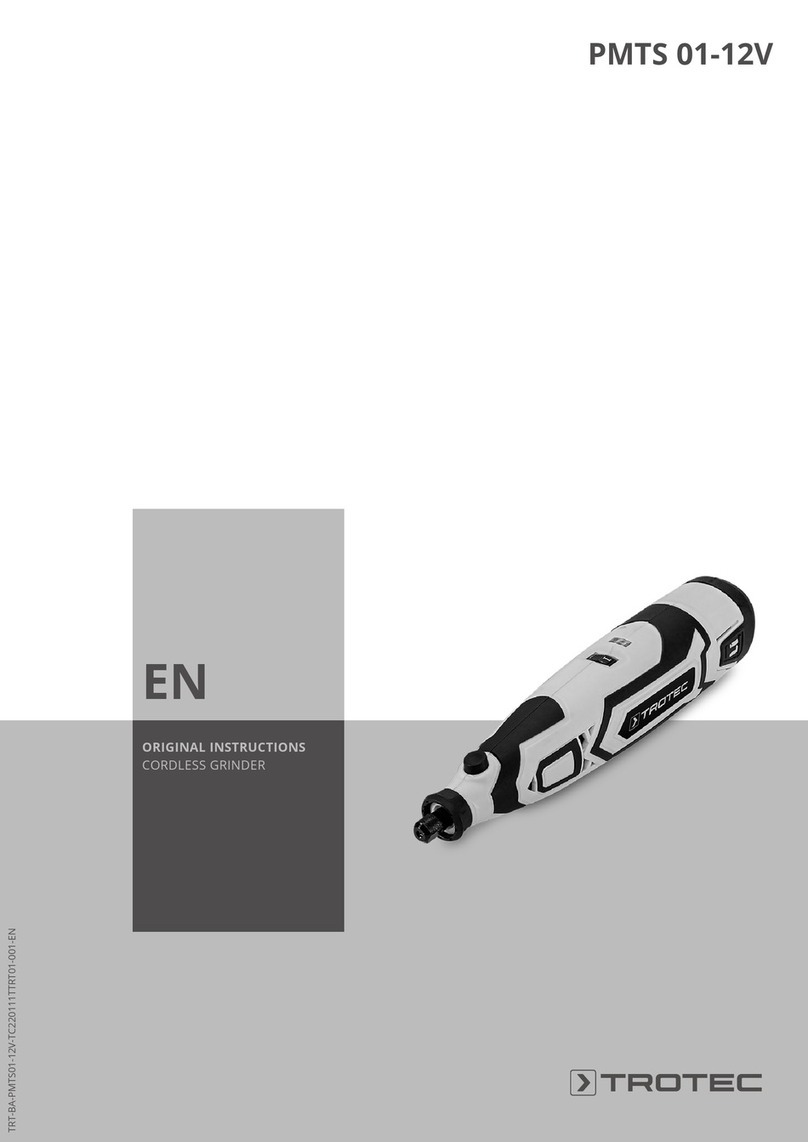
EN 5
bench grinding machine PBGS 10-120
Safety Warnings Common for Grinding, Sanding,
Wire Brushing, Polishing or Abrasive Cutting-Off
Operations
•Do not use accessories which are not specifically
designed and recommended by the tool manufacturer.
Just because the accessory can be attached to your power
tool, it does not assure safe operation.
•The rated speed of the accessory must be at least
equal to the maximum speed marked on the power
tool. Accessories running faster than their rated speed can
break and fly apart.
•The outside diameter and the thickness of your
accessory must be within the capacity rating of your
power tool. Incorrectly sized accessories cannot be
adequately guarded or controlled.
•Abrasive wheels, abrasive rolls or other accessories
must fit exactly on the grinder spindle or collet chuck
of your power tool. Accessories that do not precisely
match the holder of the power tool will run out of balance,
vibrate excessively and may cause loss of control.
•Wheels, abrasive cylinders, cutting tools or other
accessories mounted on a mandrel must be fully
inserted into the collet chuck or jaw chuck. The
“protrusion” or the exposed part of the mandrel
between the abrasive accessory and the collet chuck
or jaw chuck must be minimal. If the mandrel is not
sufficiently tensioned or the abrasive accessory protrudes
too far forward, the accessory may become loose and be
ejected at high speed.
•Do not use a damaged accessory. Before each use
inspect the accessory such as abrasive wheels for
chips and cracks, abrasive rolls for cracks, tear or
excess wear, wire brushes for loose or cracked wires.
If power tool or accessory is dropped, inspect for
damage or install an undamaged accessory. After
inspecting and installing an accessory, position
yourself and bystanders away from the plane of the
rotating accessory and run the power tool at maximum
no-load speed for one minute. Damaged accessories will
normally break apart during this test time.
•Wear personal protective equipment. Depending on
application, use face shield, safety goggles or safety
glasses. As appropriate, wear dust mask, hearing
protectors, gloves and workshop apron capable of
stopping small abrasive or workpiece fragments. The
eye protection must be capable of stopping flying debris
generated by various operations. The dust mask or
respirator must be capable of filtrating particles generated
by your operation. Prolonged exposure to high intensity
noise may cause hearing loss.
•Keep bystanders a safe distance away from work area.
Anyone entering the work area must wear personal
protective equipment. Fragments of workpiece or of a
broken accessory may fly away and cause injury beyond
immediate area of operation.
•Hold the power tool by insulated gripping surfaces
only, when performing an operation where the cutting
accessory may contact hidden wiring or its own cord.
Cutting accessory contacting a "live" wire may make
exposed metal parts of the power tool "live" and could give
the operator an electric shock.
•Always hold onto the power tool firmly when starting
it. When running up to full speed, the reaction torque of
the motor can cause the power tool to twist.
•If possible, use clamps to hold the workpiece in place.
Never hold a small workpiece in one hand and the
power tool in the other while using it. Tightly clamping
small workpieces allows you to have both hands free and
to have better control of the power tool. When removing
round workpieces such as wooden dowels, bar stock or
pipes, they tend to roll away, causing the accessory to jam
and be catapulted towards you.
•Keep the connecting cable away from spinning
accessories. If you lose control of the device, the cord
may be cut or snagged and your hand or arm may be
pulled into the spinning accessories.
•Never lay the power tool down until the accessory has
come to a complete stop. The spinning accessory may
grab the surface and pull the power tool out of your
control.






